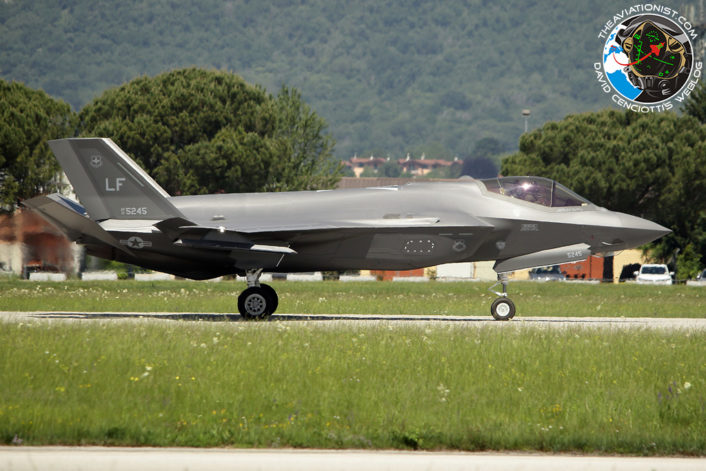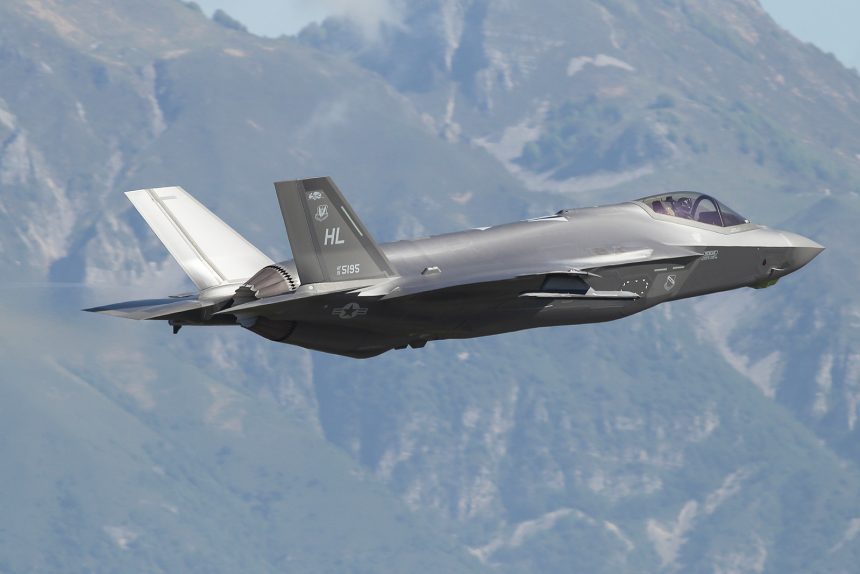The U.S. Air Force F-35A deployed to Aviano for Astral Knight 2019 shared data with the Italian Air Force F-35A using the Multifunction Advanced Data Link during the recent European Defense drills.
One of the key features of the F-35 Lightning II 5th generation aircraft is the ability to act as a real node of a Command and Control system by means of datalinks. The stealth jet is equipped with the Link 16, a widely used TDL (Tactical Data Link) that acts as a sort of “backdoor” allowing the F-35 to communicate with legacy aircraft and perform the function of “enhancers” of previous generation platforms; and the most advanced, and unique to the aircraft, MADL (Multifunction Advanced Data Link).
As explained in a previous post about the F-35, MADL is a secure datalink that allows Lightning II aircraft to communicate among each other or with other platforms using the same technology, like the B-2 bomber and ships equipped with the AEGIS Combat System. MADL increases the capabilities of a formation of F-35s, sharing sensors and data from each aircraft to create greater Situational Awareness, as done by the F-22s in Syria.
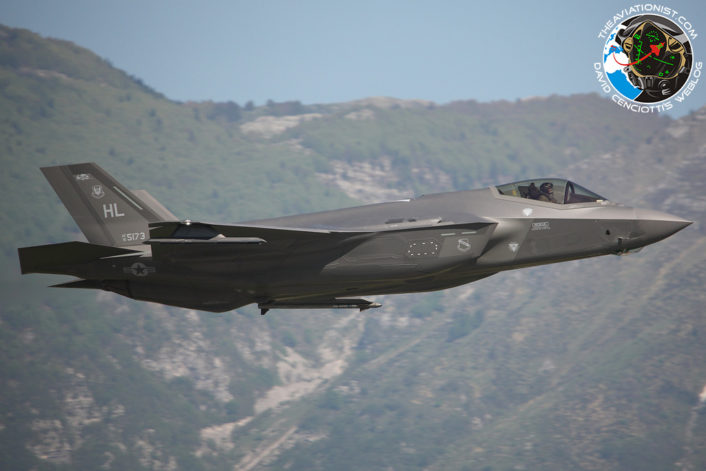
The interconnection systems available to the F-35 are not even comparable to the previous ones according to the pilots. “The available bandwidth capacity allows us to transfer much more information, which also translates into a better quality of “service”. It is like comparing the connectivity and services offered by the GSM mobile network with the current 4G networks: with the bandwidth available 10 years ago we could at most send text messages; today we can use Whatsapp and attach images, emoticons, audio and video files to the text”, the Italian Air Force’s 32° Stormo (Wing) Commander Col. Davide Marzinotto told us in a recent interview.
In fact, this ability of the F-35 to interconnect with other actors and transfer data at high speed allows the development of tactics never seen before.
In the United States, the F-35s were used to transfer targeting information to U.S. Navy warships or to the U.S. Army M142 HIMAR (High Mobility Artillery Rocket System). In Italy, the F-35s of the 32° Stormo have already operated with the Italian Army JTACs (Joint Terminal Attack Controllers) as part of DA-CAS (Digitally-Aided CAS) missions in which high-performance transmission channels were exploited to exchange digital messages via VMF (Variable Message Format), in order to reduce the risk of misunderstandings between aircraft and ground forces.
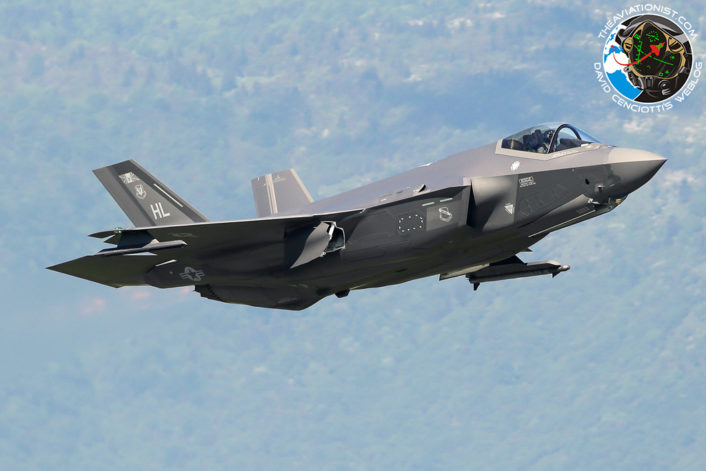
That said, interconnection between Italian and U.S. F-35, made possible by MADL, was put in place during the recent Astral Knight 2019 exercise.
Astral Knight 2019, was a four-day joint-multinational exercise led by U.S. Air Forces in Europe, with the aim to demonstrate the defense capabilities of the U.S. integrated air and missile defense system in Europe, through a combination of flight operations and computer-assisted scenarios.
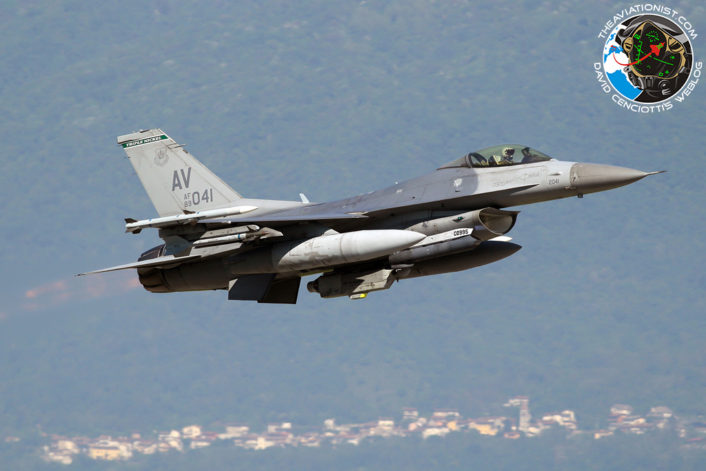
More than 30 USAF aircraft took part in the exercise, including the F-35A Lightning IIs deployed to Aviano as part of TSP (Theater Security Package) on May 23 (and moved to Spangdahlem, Germany, on Jun. 11, 2019), F-16 Fighting Falcons, KC-135 Stratotankers and E-3 Sentry aircraft. The Italian Air Force took part in the exercise with the F-35A Lightning IIs and Eurofighter Typhoons deployed to Istrana as well as a G550 CAEW (Conformal Airborne Early Warning) aircraft from Pratica di Mare airbase. The Croatian Air Force took part in the drills with its MiG-21s.
Last day for Astral Knight 2019 exercise. Several air refueling missions over Adriatic Sea under way: an Italian Air Force Boeing KC-767A off Rimini and two #USAF KC-135R between Italy and Croatia. We’re tracking also an USAF Lockheed Martin F-35A (13-5067).@TheAviationist pic.twitter.com/HVDCT079ON
— ItaMilRadar (@ItaMilRadar) June 6, 2019
The focus of the multi-national exercise, was to defend several key areas of terrain from cruise-missile and aircraft strikes. Integration was one of the key themes of Astral Knight because it will be essential in any future war, and for the first time, U.S. Air Force F-35As (belonging to Hill AFB’s 421st Fighter Squadron) integrated operationally with Italian Air Force F-35As and communicated with each other over the MADL:
“Bringing together multiple nations for an exercise of this scope is crucial,” said Lt. Gen. Steven Basham, U.S. Air Forces Europe and Air Forces Africa deputy commander in a public release. “It is vital that we continue to expand our capability to operate with each other and integrate fifth-generation assets, like the F-35.”
The F-35As jets from the 388th and 419th Fighter Wings, from Hill AFB, Utah, also flew alongside the U.S. Air Force 31st FW F-16s, KC-135 Stratotankers, E-3 Sentry Airborne Warning and Control aircraft and also B-52s taking part to a mission over the Adriatic Sea from their base at Barksdale AFB, Louisiana.
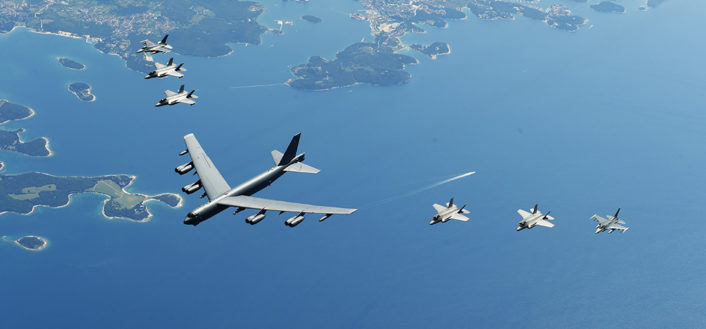
“The F-35’s sensors provide unmatched situational awareness of the battlespace,” Orzechowski said. “Both us and the Italian F-35s are able to share all of that information with other aircraft in the formation, with ground-based missile systems, and we make everyone more lethal and survivable. The scenarios we saw really demanded that capability.”
